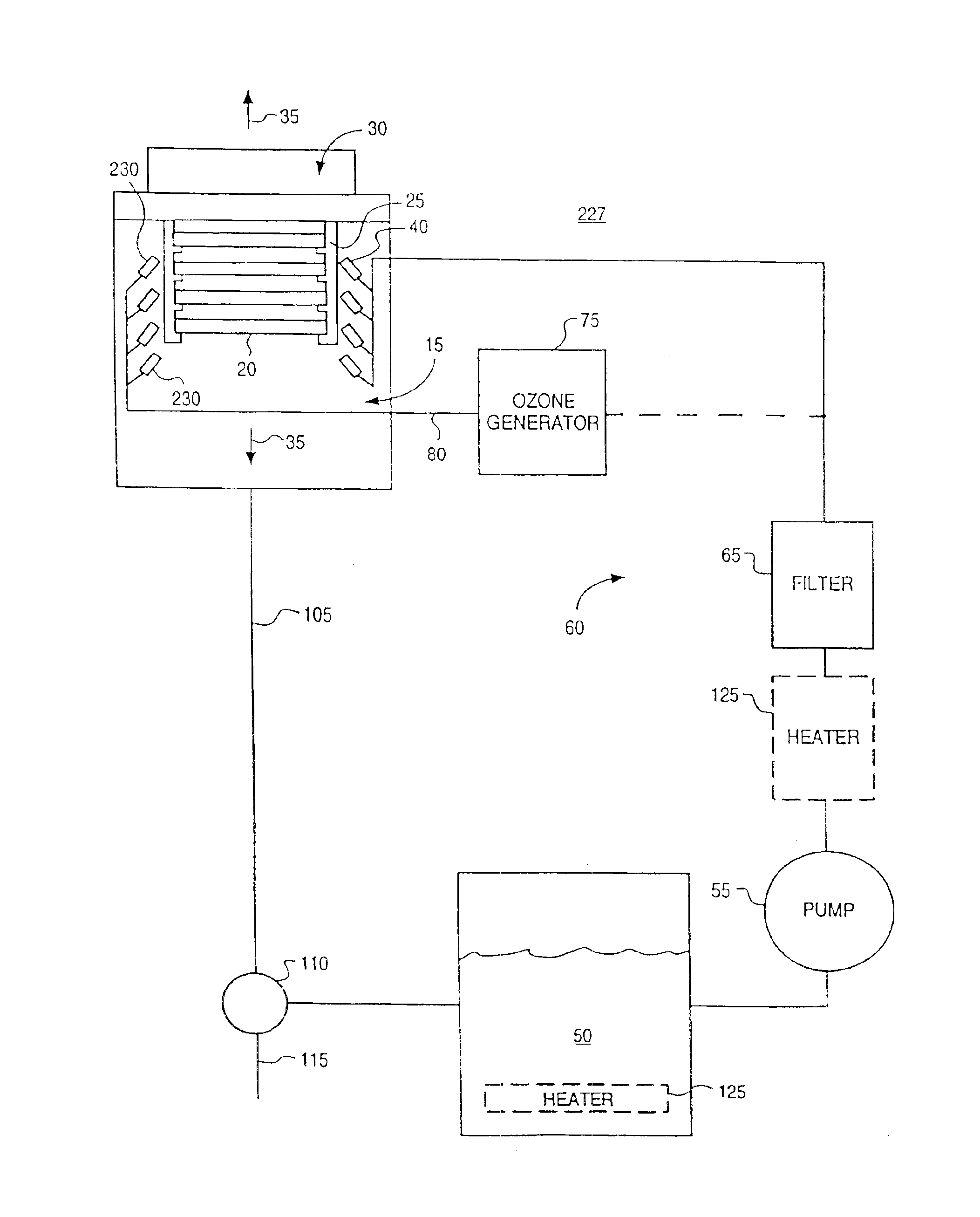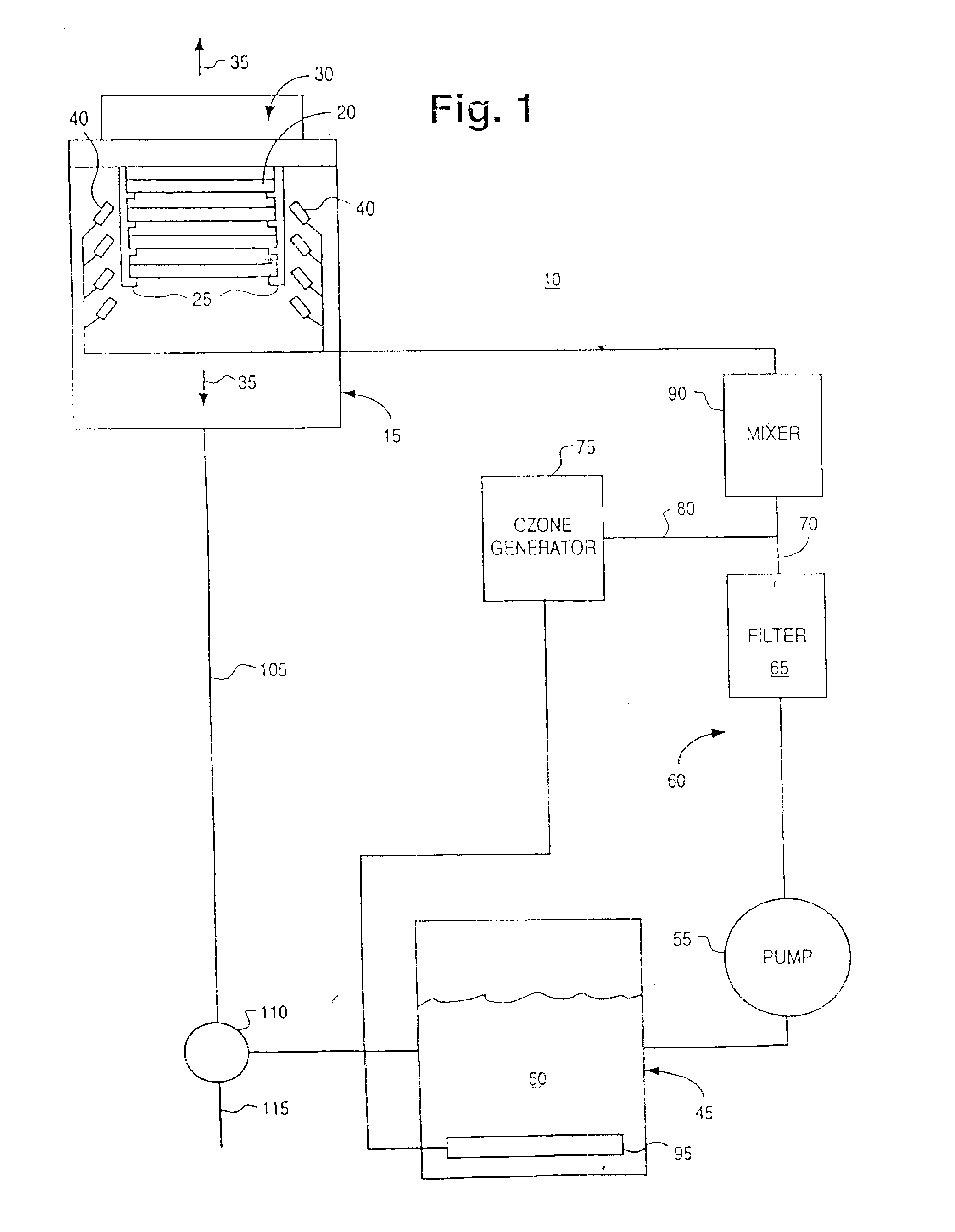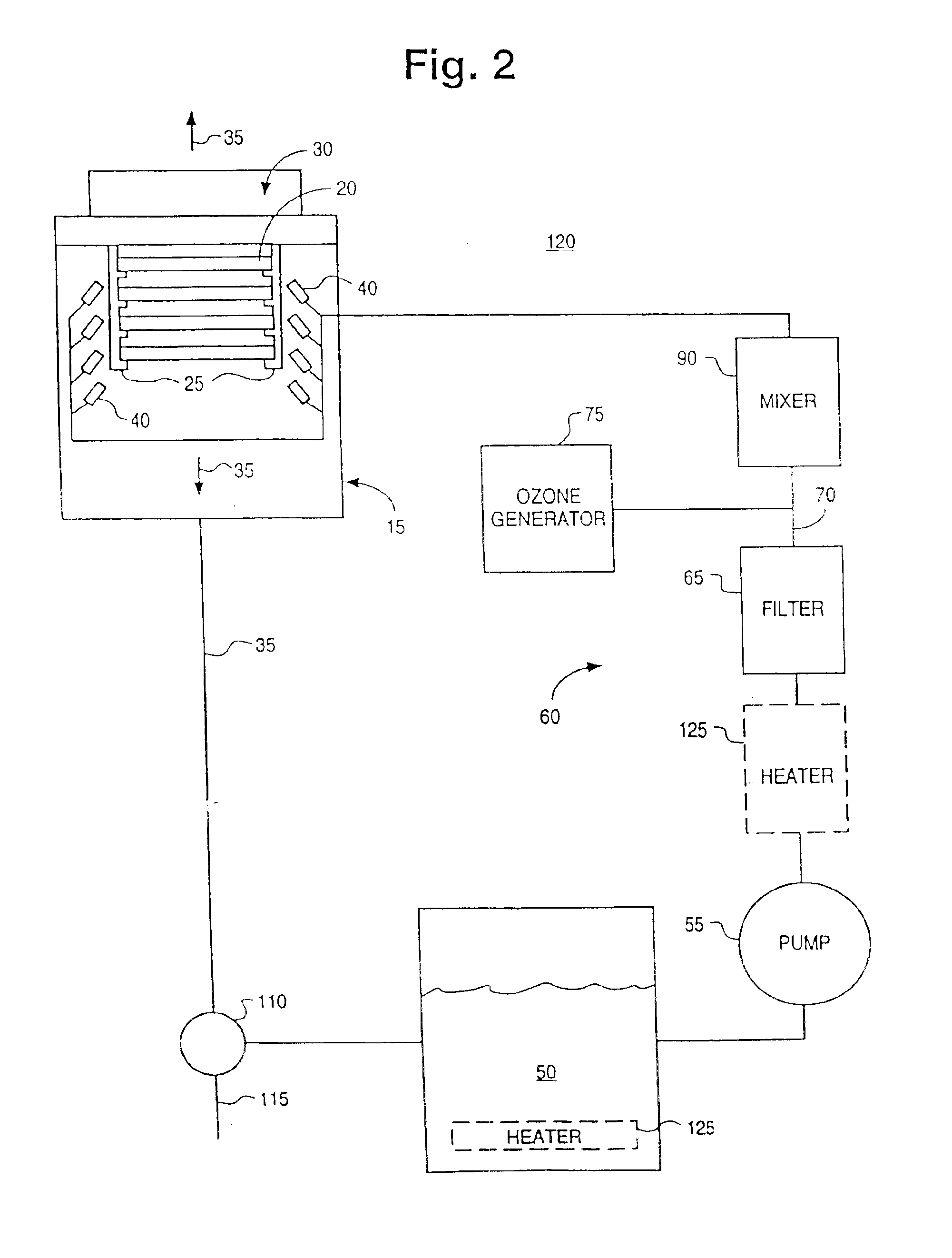Process and apparatus for treating a workpiece such as a semiconductor wafer
a technology of workpieces and processing equipment, applied in the direction of sustainable manufacturing/processing, final product manufacturing, cleaning using liquids, etc., can solve the problems of high performance degradation of devices, silicon dioxide, fabrication structure, and can be considered contaminants, so as to reduce contamination, speed up processing, and high clean level
- Summary
- Abstract
- Description
- Claims
- Application Information
AI Technical Summary
Benefits of technology
Problems solved by technology
Method used
Image
Examples
Embodiment Construction
Apparatus for supplying a mixture of a treatment liquid and ozone for treatment of a surface of a workpiece, such as a semiconductor workpiece, to execute the foregoing processes are set forth below. The preferred embodiment of the apparatus comprises a liquid supply line that is used to provide fluid communication between a reservoir containing the treatment liquid and a treatment chamber housing the semiconductor workpiece. A heater heats the workpiece, either directly or indirectly. Preferably, the workpiece is heated by heating the treatment liquid that is supplied to the workpiece. One or more nozzles accept the treatment liquid from the liquid supply line and spray it onto the surface of the workpiece while an ozone generator provides ozone into an environment containing the workpiece.
Referring to FIG. 1, the treatment system, shown generally at 10, includes a treatment chamber 15 that contains one or more workpieces 20, such as semiconductor wafer workpieces. Although the ill...
PUM
| Property | Measurement | Unit |
|---|---|---|
| temperature | aaaaa | aaaaa |
| temperature | aaaaa | aaaaa |
| temperature | aaaaa | aaaaa |
Abstract
Description
Claims
Application Information
 Login to View More
Login to View More - R&D
- Intellectual Property
- Life Sciences
- Materials
- Tech Scout
- Unparalleled Data Quality
- Higher Quality Content
- 60% Fewer Hallucinations
Browse by: Latest US Patents, China's latest patents, Technical Efficacy Thesaurus, Application Domain, Technology Topic, Popular Technical Reports.
© 2025 PatSnap. All rights reserved.Legal|Privacy policy|Modern Slavery Act Transparency Statement|Sitemap|About US| Contact US: help@patsnap.com



